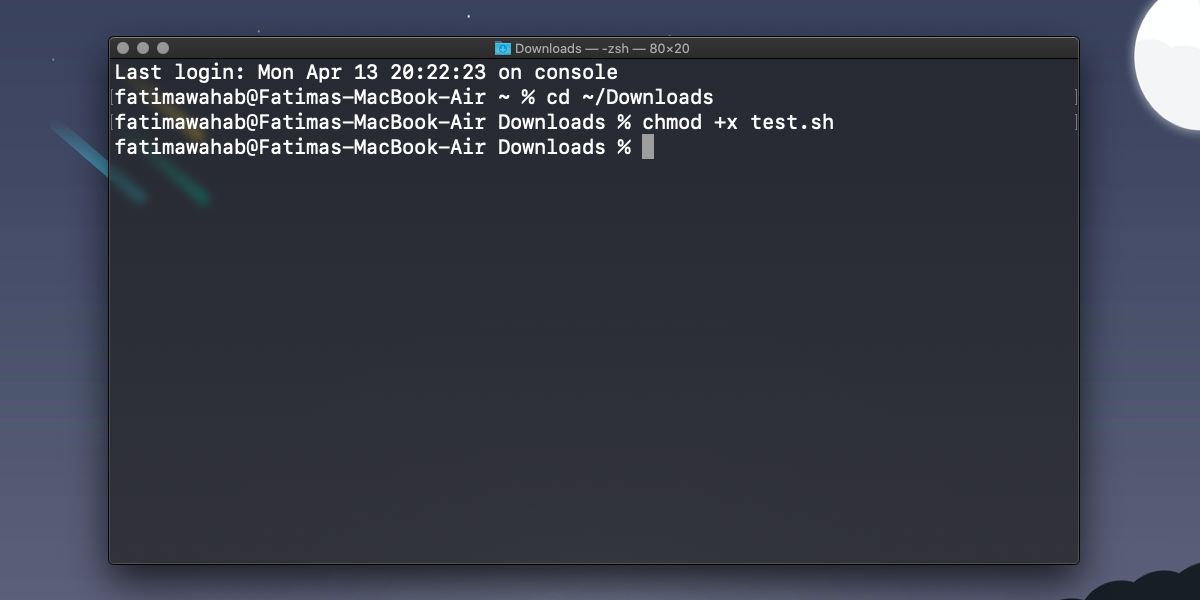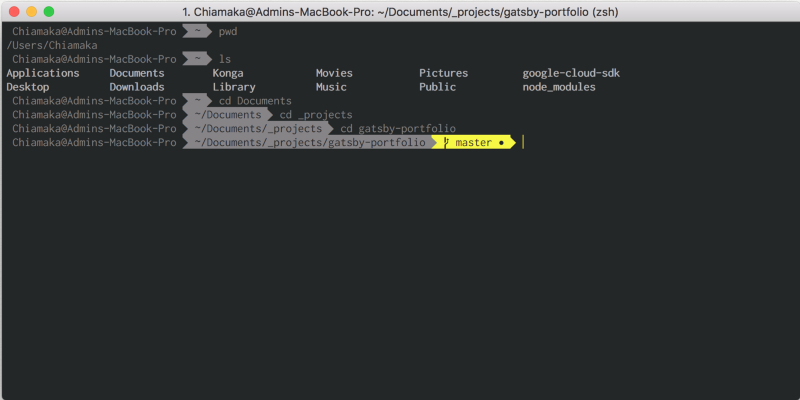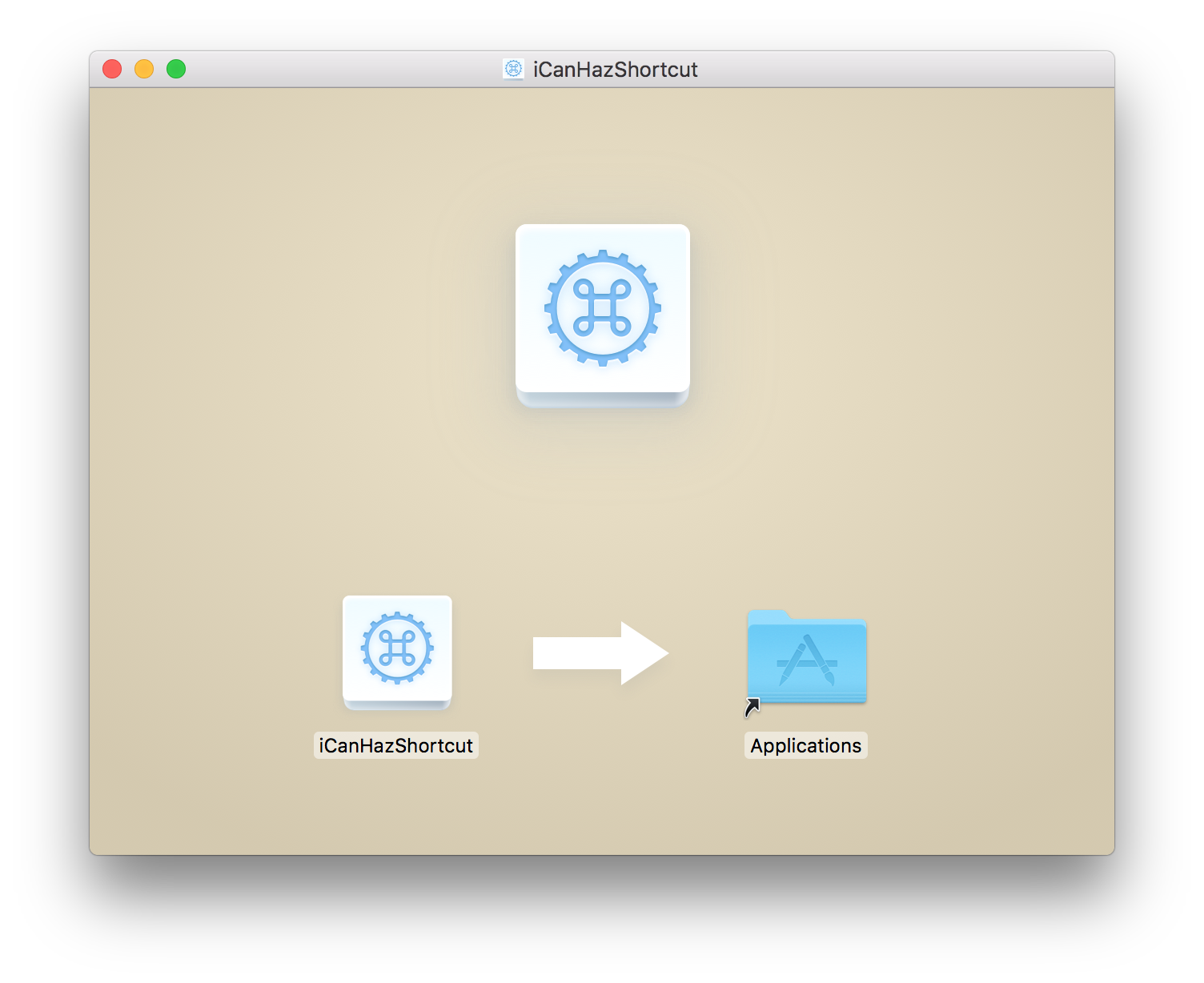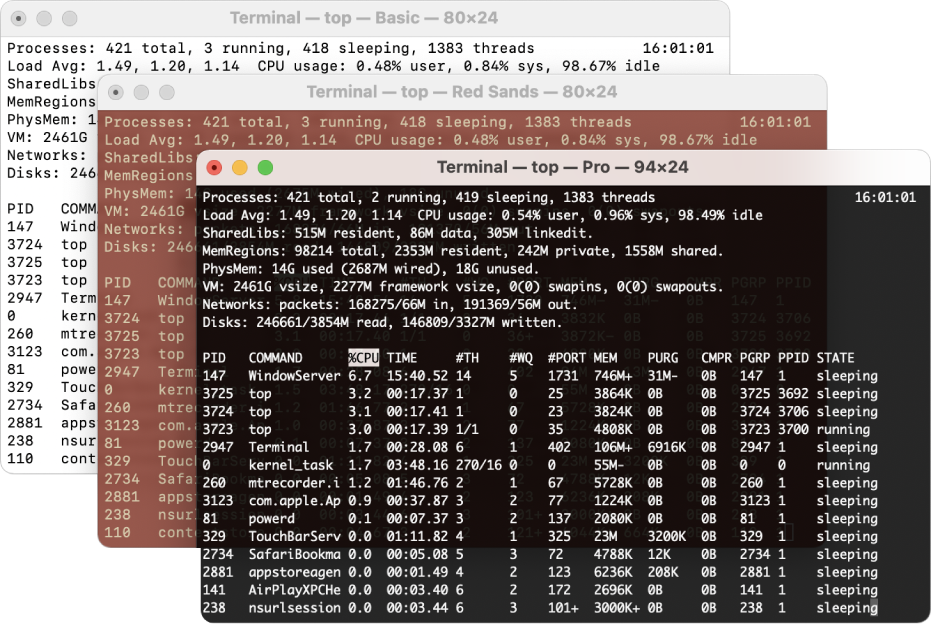
- #Mac os terminal shortcut re run a command how to#
- #Mac os terminal shortcut re run a command mac os#
- #Mac os terminal shortcut re run a command install#
- #Mac os terminal shortcut re run a command code#
#Mac os terminal shortcut re run a command install#
Many prefer to install and use iTerm2 instead of the built-in Terminal program.Install iTerm2 using Homebrew: Build an extension based on hyper.is/#extensions-api. To customize Hyper, add the name of many packages to its config file ~/.hyper.js. It is available on MacOS, Windows, and Linux because it’s built using Electron (the same platform that powers Atom, Slack, and Brave). Unlike Apple’s Terminal, which is closed-source, Hyper is an open-source and extensible terminal emulator. To avoid text wrapping, cursor on the right edge to expand the screen width.This page contains notes for system administrators and developers,who need to control Macs below the UI level, which requiretyping commands into a command-line terminal screen.
#Mac os terminal shortcut re run a command code#
Many prefer the terminals built into VS Code and other editors/IDEs. R is for readable, x is for eXecutable by the user. Since the default is “0022”: -S shows the symbolic equivalent to “0022” for u=user, g=group, o=others : To identify the User Mask for permissions: Please read it for the whole story on this. Wikipedia says umask controls how file permissions are set for newly created files. bash_history lines of command history (500 by default) User Mask for permissions In other words, file /etc/profile is the system wide version of ~/.bash_profile for all users.Įxport HISTSIZE=1000 # sets the size of.

PROTIP: One can change those files, but since operating system version upgrades can replace them without notice, it’s better to create a file that is not supplied by the vendor, and within each user’s $HOME folder: ~/.bash_profile Thus, whatever is specified in /etc/profile is NOT invoked for “non-interactive” shells invoked when a user cannot manually interact with it, i.e. RedHat also executes /etc/profile.d if the shell invoked is an “Interactive Shell” (aka Login Shell) where a user can interact with the shell, i.e. NOTE: On Ubuntu, instead of /etc/bashrc, the file is /etc/bash.bashrc. The above defines the $PS1 variable which sets the Terminal’s prompt to the left of the cursor. That file’s code:Įcho $ resolves to /usr/local/bin/bash. When macOS logs in a user, it executes file /etc/profile. I put in an echo in the various files that macOS executes upon user login, when a new terminal is opened, and when a bash shell is invoked:

Click the Apple icon, System Preferences.PROTIP: If you are at the Finder program (since Yosemite) you can open a Terminal to a folder listed within Finder by pointing your mouse on it, then tapping with two fingers on the touchpad/mousepad.To enable that: Type “termin” so “Terminal.app” appears.Īlternately, if you prefer moving your mouse:.Press command+space keys (at the same time) to bring up Apple’s Spotlight universial search, then.My preferrence is a way that doesn’t require reaching for a mouse and using the least number of keystrokes: There are different ways to open a Terminal command line. On the Mac, the Terminal app is kinda buried, probably perhaps because those who use a MacOS laptop just for social media probably won’t need a Terminal.īut if you’re a developer, it’s hard to get away from using a CLI. Information here is often used in interview questions. It’s also called a command-line terminal, abbreviated as CLI. What Apple calls the Terminal is what Linux people call the shell console (more specifically, the Bash shell).
#Mac os terminal shortcut re run a command how to#
This tutorial describes how to make use of the macOS Terminal to make your life easier and less frustrating.


#Mac os terminal shortcut re run a command mac os#
If you’re an advanced user of Mac OS X, it’s very likely that you know what Terminal.app is. These commands are found only on Mac platform (and not Linux), some originating from BSD. If you’re familiar with one of the common Linux or Unix-like operating systems, you probably know all the basic MacOS commands you’ll need. Mac commands are rarely unique: most of them are inherited from Unix operating systems.


 0 kommentar(er)
0 kommentar(er)
